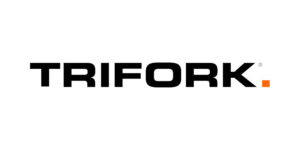Fra Moodys
Rate Hikes Will Be the Least of Market Worries
The Fed does not set interest rates in a vacuum. Indeed, the federal funds rate is shaped by a host of drivers that are hardly limited to labor market conditions. Despite warnings from high-ranking Fed officials that ultra-low interest rates are not forever, recent soundings of business activity, as well as the nearness of November 8’s Presidential election, weigh against a hiking of the federal funds rate prior to the FOMC’s December 14 meeting.
Moreover, recent data question whether 2016 will be home to even a single rate hike. In a September 12 speech, Fed governor Lael Brainard presented a convincing case favoring an extended stay by exceptionally low benchmark interest rates. On several occasions, Governor Brainard challenged the wisdom of a preemptive rate hike that intends to thwart inflation before it takes hold.
Given “the absence of accelerating inflationary pressures” and the limited scope for lowering of fed funds in the event recession risks rise, Brainard argues for the continuation of a highly accommodative monetary policy. Basically, the macroeconomic costs of mistakenly hiking rates too early are viewed as well exceeding the potential inflationary costs of waiting too long to confront inflation.
The damage done by a premature rate hike may be harder to repair than the damage resulting from above-target price inflation. However, there is an alternative view that views ultra-low interest rates as doing more harm than good because of how cheap money (i) boosts savings in order to compensate for negligible interest income and (ii) forces investors to purchase riskier assets offering higher, though volatile, returns.
Futures now sense 2016 will end without a rate hike As measured by the CME Group’s FedWatch tool, fed funds futures assign an implied probability of only 12% to a hiking of fed funds at the September 21 meeting of the FOMC. Thereafter, the implied likelihood barely rises to 20% for the November 2 meeting and climbs no higher than 47% for the FOMC’s deliberations of December 14. For now, the futures market does not expect a single rate hike for 2016.
The latest declines by the implied probabilities of rate hikes at the FOMC’s remaining three meetings for 2016 stemmed from lower than expected August readings for retail sales and industrial production. Despite the latest indications of subpar business sales, US equities rallied.
Moreover, an accompanying drop by the VIX index hinted a narrowing of the high-yield spread that recently widened from September 8’s 18-month low of 508 bp to September 14’s 538 bp. Nevertheless, at some point, the corporate earnings outlook will overrule the now predominant influence of Fed policy.
Unless business sales soon accelerate sufficiently, market participants will begin to fret over the adequacy of earnings for 2016’s final quarter and all of 2017. Slower core retail sales question equity market’s upbeat revenue outlook Retail sales fell by -0.3% monthly in August, with or without gas station sales. Before seasonal adjustment, the year-over-year growth of retail sales excluding gas station sales — or core retail sales — has slowed from the 4.9% of the span-ended August 2015 to the 3.7% of the span-ended August 2016.
As derived from the 0.71 correlation between the high-yield bond spread and the yearly percent change of core retail sales’ moving three-month average, core retail sales’ latest annual increase has been statistically associated with a 585 bp midpoint for the high-yield bond spread. (Figure 1.) Dragging the yearly growth rate of core retail sales lower from the three-months-ended August 2015 to the three-months-ended August 2016 were comparably measured slowdowns affecting autodealership sales (from 6.6% to 2.4%), furniture & appliance store sales (from growth of 5.4% to a dip of -0.2%), apparel & general merchandise store sales (from a 1.1% rise to a -0.9% dip), and restaurant sales (from 7.4% to 5.7%).
Recent analyst expectations of an acceleration by the annual per share sales growth rate of the S&P 500’s non-energy companies from Q2-2016’s 2.8% to Q4-2016’s projected 4.8% may go unfulfilled. For example, Q2- 2016’s 6.6% increase by the per share sales for the S&P 500’s discretionary consumer spending companies has been endangered by July-August 2016’s -1.6% yearly drop by unit sales of light motor vehicles and by July’s -2.2% yearly retreat for an index of pending home sales.
Given the limited scope for monetary stimulus, complacency is ill advised. Core business revenues favor much wider spreads The retail sales report is the first of four releases that will help to gauge the state of business sales for the month of August. This estimate sums the sales of manufacturers, retailers, and wholesalers and then adds in construction spending.
All of the data used in this approach is seasonally adjusted. In order to eliminate swings in sales brought on by volatile energy prices, an estimate of core business revenues excludes sales of identifiable energy products. The annual increase of core business revenues has slowed from Q1-2016’s already very sluggish 1.8% to the 1.2% of both Q2-2016 and July-August 2016. The third-quarter-to-date results on core business revenues do not bode favorably for the equity market’s upbeat outlook for corporate revenues.
Moreover, the well below-trend performance of core business revenues weighs against a further narrowing by the high-yield bond spread. The high-yield bond spread and the yearly percent change of core business revenues’ moving three-month average generate a decent correlation of 0.70. According to the statistical relationship, the now 1.3% yearly rise by core business revenues favors a wide 650 bp midpoint for the high-yield bond spread. (Figure 2.)









